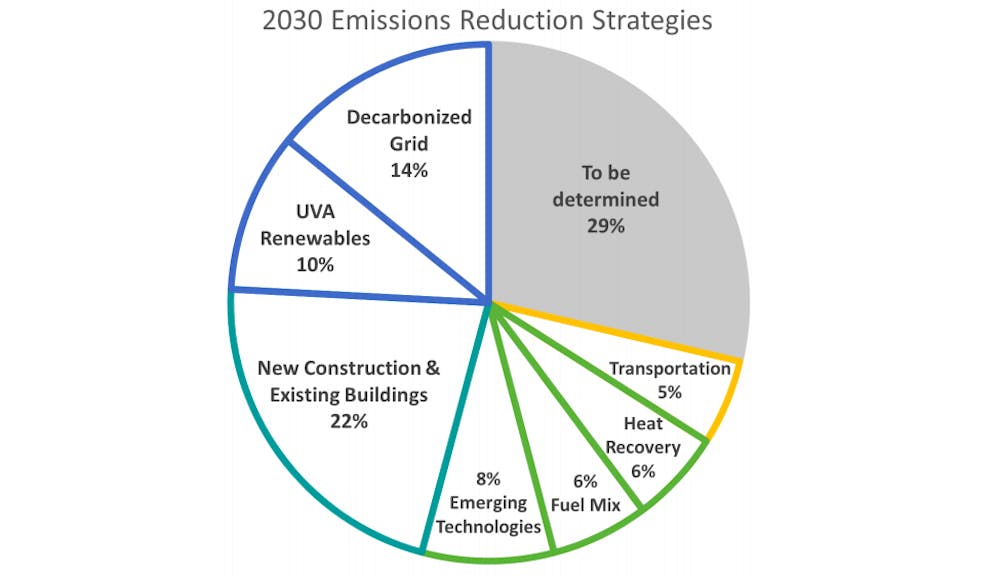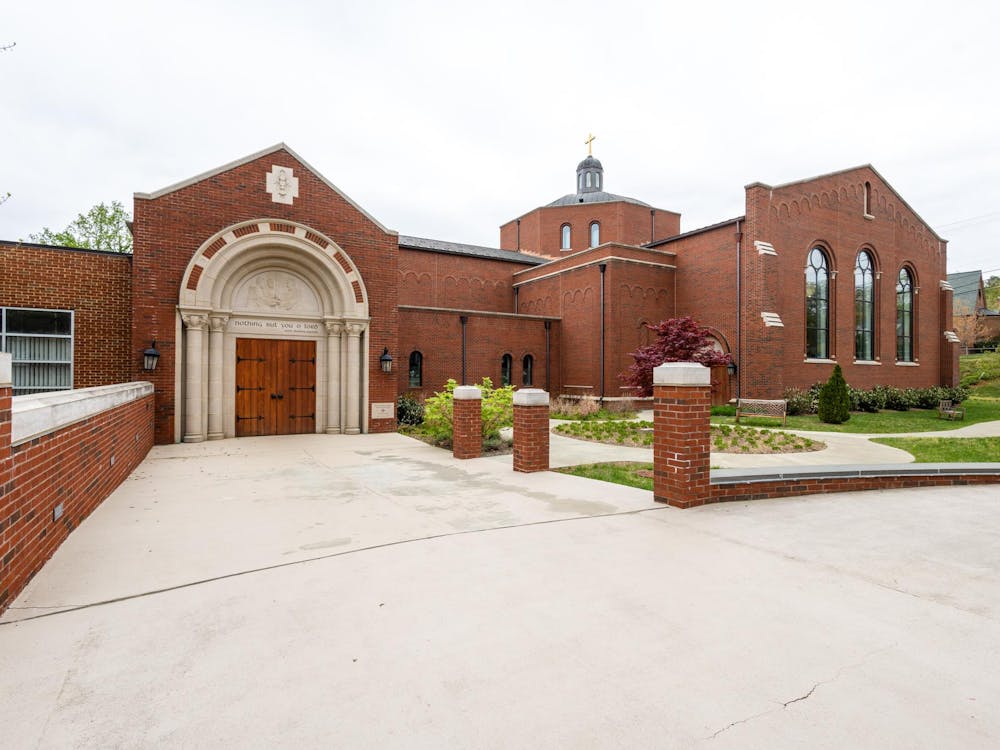The University’s Board of Visitors voted to implement a new sustainability proposal at their full Board meeting Friday, which outlined strategies and initiatives to achieve sustainability goals throughout the 2020-2030 timeframe of President Jim Ryan’s 10-year strategic plan. The new plan was put forth by the University’s Committee on Sustainability co-chairs — University Facilities Management Director Cheryl Gomez and School of Architecture Professor Phoebe Crisman.
The plan uses a framework focused on the three main ideas — the University’s resources, community engagement and innovation in sustainability.
“We have quite a robust program of community engagement,” said Senior Vice President for Operations Colette Sheehy, who introduced the proposal to the Board. “Not only with our own community and U.Va. students, faculty and staff, but also outside the University with the city, with the county, statewide in Virginia, nationally, across the country.”
The plan itself has three main goals — the first being achieving carbon neutrality by 2030 and fossil fuel free by 2050. The College of William & Mary also shares the University’s carbon neutral by 2030 goal, leading to a partnership between the institutions. At the University, strategies to achieve these goals include using renewables, creating more sustainable buildings and improving transportation.
“Looking at the total cost of ownership, it does look like electric buses are approaching the cost of diesel buses,” Gomez said. “So we're very optimistic about where this is moving.”
The next major goal is aimed at achieving “30 by 30” objectives. This includes reducing water use, reactive nitrogen losses and waste footprints by 30 percent — relative to 2010 levels by 2030.
“Here at U.Va., we are a leader,” Gomez said. “Professor of environmental sciences, Jim Galloway, was a leader in determining and bringing some methodology to calculating reactive nitrogen. U.Va. became the first university anywhere to have a reactive nitrogen reduction plan and 18 other institutions now are using our methodology developed here at U.Va. for their reactive nitrogen.”
Reactive nitrogen is an umbrella term for various nitrogen compounds such as nitrogen oxides, ammonia and nitrates — they are mostly the result of intensive farming and fossil fuels. When these compounds runoff into water sources the consequences can be devastating, leading to acid rain, loss of biodiversity and dead zones in the world's oceans where oxygen has been depleted. The new sustainability plan will try to combat these negative effects by implementing a climate action plan as well as increasing plant-forward meal options, switching to sustainable meat and reducing food waste at the University’s dining halls.
“A very important part of what we're trying to do here is accountability,” Gomez said. “It can't be this committee over here, this office over here trying to change them. Every single person, every institution, faculty, staff, students, visitors need to have accountability integrated into what we’re trying to get done here. It’s extremely important.”
The third and final major goal of the sustainability plan is partnering with the community to accelerate collaborative initiatives to advance sustainable, equitable and healthy places for all. This includes working with the City and county on sustainability initiatives, increasing awareness through outreach programs such as Green Workplace and collaborating with institutions of higher education to expand replicable models.
For instance, the University hopes to partner with the Charlottesville community on sustainable transportation planning and climate action, as well as host events and training around the area.
“So this is an extremely important part,” Sheehy said. “It's partnering within the University in every unit, at every level of the University to get people engaged and involved in being accountable for what we're doing here.”
On Saturday morning — a day after the Board’s meeting — graffiti calling for the University to divest from fossil fuel companies were found chalked around Central Grounds, including at the Rotunda where the meeting on sustainability was held. It is not clear who is responsible for the graffiti or when it was committed.







